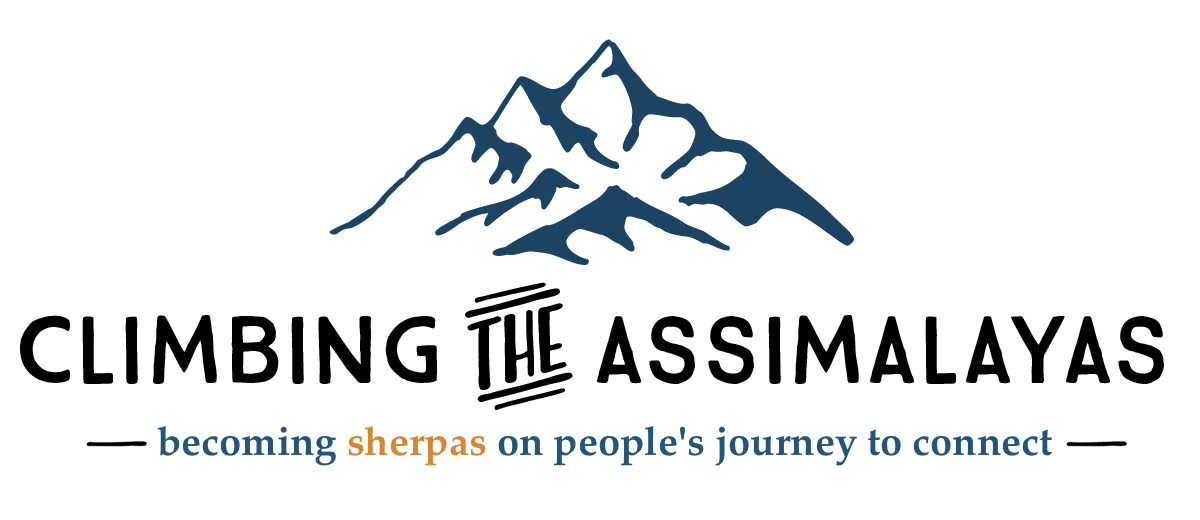Three new beliefs that are keeping my head above water these days
For those of you who read my very personal update, you know that I went through the ringer last year. I could barely form thoughts I was so overwhelmed.
The three things that got me through that wilderness were powerful. But now my focus has been on keeping my head well above the water that I was drowning in only a matter of months ago.
The post-COVID world (much less the post-COVID church world) has brought its own set of challenges that could easily derail you and I if we remain in too vulnerable a state. So with the help of my friend Gene Appel (our Lead Pastor) and my Life Coach Ben Greene, I have developed in my soul three new beliefs that have led me from operating at just 65% capacity to 100% as of this month.
I have been looking forward to sharing them with you so here they are.
Three new beliefs that are keeping my head above water these days
We don’t have a fraction of our church back after COVID. We have 100% of those God wants us to serve right now.
After reopening the church post-quarantine, our physical attendance has averaged around 45% of what it was pre-COVID. Even though our online attendance has been twice that amount (and our giving has remained strong), It was discouraging to feel like 55% of our church was missing every weekend.
That was until I realized that wasn’t true.
Our Lead Pastor Gene Appel brought this clarity to us as a staff team when he told us that 55% of our church wasn’t missing. Everybody God wanted us to serve was right here every weekend….100% of them!
This has cascading implications for keeping our heads above water as Sherpas. It changes the way I look at our reduced number of volunteers as well.
During this season, I kept seeing a volunteer shortage when there really wasn’t to any great degree. One reason for that distortion was my failure to connect these two dots: greatly reduced physical attendance means less volunteers are needed to serve them. Once I acknowledged that, I began to see the remaining volunteer shortage as largely due to my not reducing the scale of our volunteer org chart to something more simple that reflected our new attendance numbers.
Scaling back to a structure that served you in a previous season of ministry may be a strategically freeing option for you. Either way, believing everyone is here who God wants us to serve (including everyone we need to serve them with) is an empowering reality for me and fuel for good decision making.
It also allowed my head to rise above the water line so I could come to a new personal epiphany about my energy level…
I don’t have a fraction of the personal capacity I had before COVID. I have 100% of the capacity I need to do what God wants me to do today.
When I started coming out of my personal winter season, I didn’t go from 65% of my normal mental and physical capacity to 100% overnight. I woke up on Tuesday morning July 27th with a capacity that felt more around 80%. That felt significant. You can’t imagine what a difference that increase made after 8 long months.
It would be another 8 months before I got back to 100%.
Though that initial bump was instantaneous (made possible by the 3 practices I wrote about here), the road back to my full capacity was gradual and long. My experience was that I had no control over the percentage. Ben Greene, my life coach, helped lead me on the journey from 80% to 100%, a much longer journey than those 20 digits may imply.
I remember one of the breakthrough conversations I had with Ben during that time. He told me that my focus was too much on the difference between where my capacity was at and the elusive 100% I was longing for. He challenged me with this thought: What if instead of evaluating your reduced capacity and adjusting your daily expectations to it, what if you just acknowledged that you have 100% of the capacity you need to do what God requires of you today? What kind of a difference would that mentality make?
It turns out, all the difference in the world. He shared that thought with me in early November last year. By March of this year, I realized I was back at 100%, able to think through things more thoroughly and handle complexities at a higher level than I had before. To say it feels great is an understatement.
If you are facing a reduced capacity due to personal losses you are facing or the aftermath of COVID on your life and ministry, I recommend asking your church if they will cover the cost of a few months with a life coach like Ben. To find out more about Ben, click here. Tell him I sent you.
3. My 100% may be different now. Account for it.
Ben helped me understand something else about my current capacity: even though I may be back to 100%, my 100% might look different now and I need to get familiar with it.
Think of it this way. You may have both 8 ounce glasses and 12 ounce glasses in your kitchen cupboard. If you fill both of them up with water, they are both at 100% of their capacity even though one has 4 ounces less in it.
The same may be true of us.
Our full capacity before COVID may have looked different than our top capacity now for a variety of reasons. We may be less equipped for our current reality so even though we are bringing our all, it may not have the same effect. Or, it may have an increased effect!.
We are also all 2 years older than we were in March of 2020. Age, health, pace and protocols can all impact how fast we are running, even if it is a sprint. And that’s OK.
While I was assessing whether I was a 12 ounce glass or eight ounce glass, I adopted two practices to account for my new capacity. One I got from Gary Keller, author of The One Thing where he proposes asking yourself this question every morning: What is the one thing that if I get it done today, all other things will become easier or unnecessary. Usually that meant a task I was avoiding but a task that would move everything forward in a notable way. So for a while, all I planned to do was one thing per day. The energy that came from doing something that made everything else on my to do list easier or unnecessary was palpable.
The second practice was to put my to do list in one hour blocks on my calendar. I usually didn’t need an hour to make 3 phone calls or write 3 emails but the extra margin allowed for interruptions, surprises, or even a coffee break. It also insured that I got everything done (which energized me as a 3 on the enneagram) while accounting for the possibility of my having a “smaller glass” in this new season.
I am happy to report that as of this month, I feel an energy and mental acuity that I haven’t felt in years. I can process complexity at a level now that I haven’t been able to for quite some time. I feel it has to do with these 3 new beliefs I’ve adopted. I hope that considering them will expand your capacity as you help new people find their way toward authentic connections at your church.
Is your head at, above or under water these days?
What percentage capacity for ministry do you have currently? Why? What percentage capacity would you use to describe your team in this season?
Which of these three beliefs are most important for you right now? Why is that?
What decision(s) do you need to make to account for any capacity changes that you or your team may have right now?



